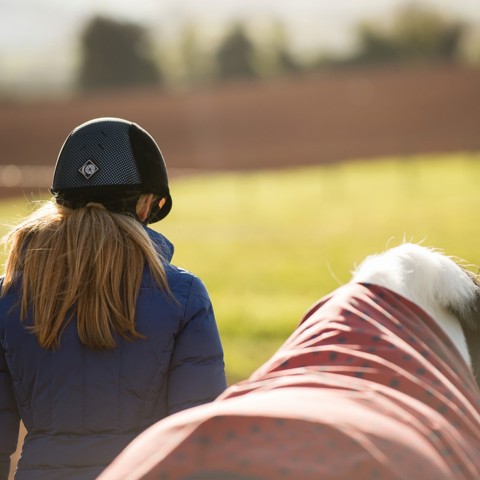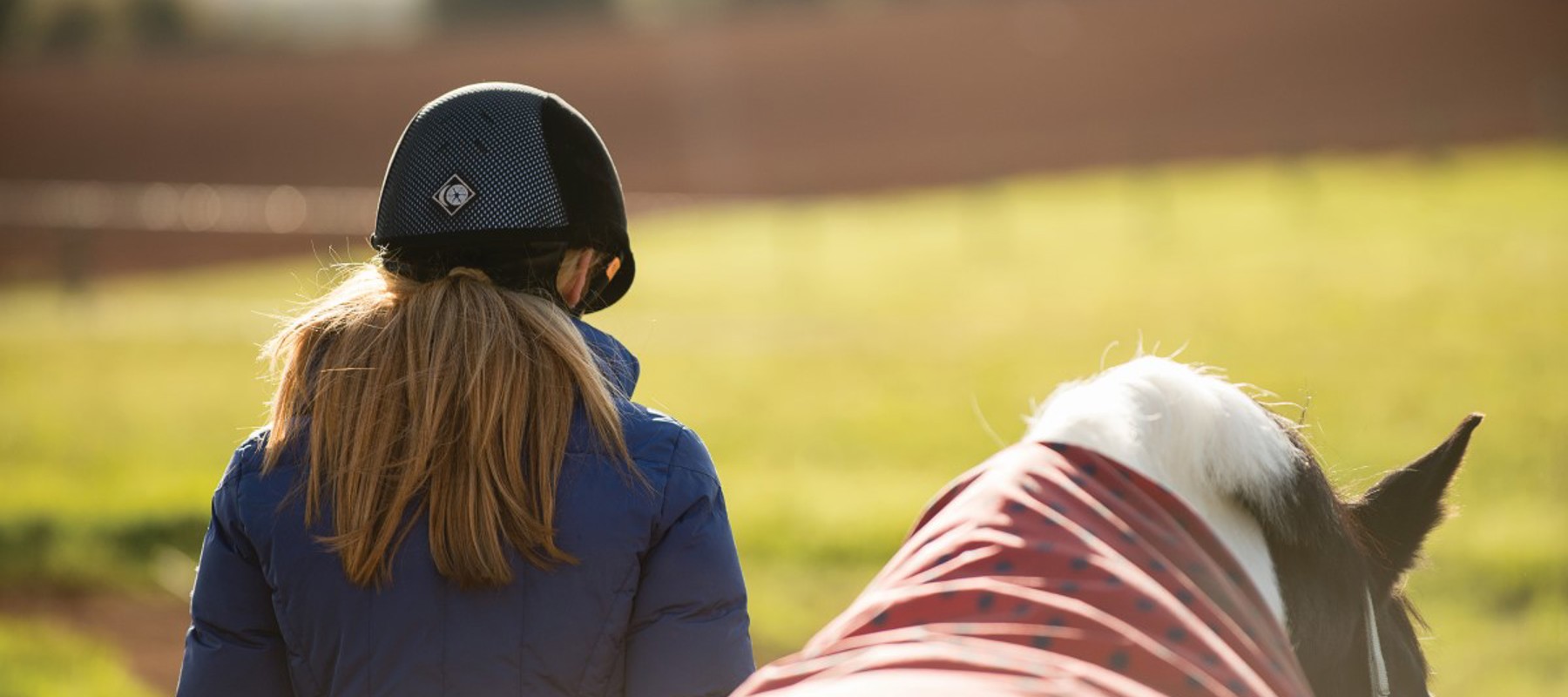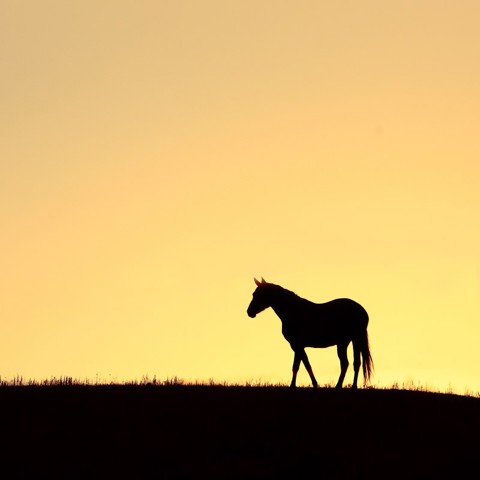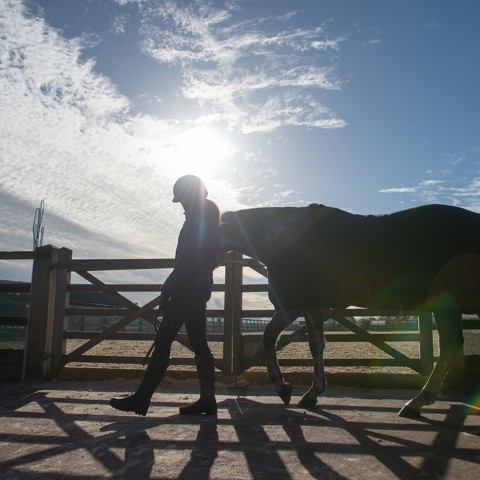Thanks to improvements in veterinary care, nutrition and management, horses and ponies today live longer than ever, with many living into their 30s. However, most horses will start to show the first signs of ageing in their mid to late teens, so knowing what signs to look for means you can adapt how you manage your horse’s physical and mental wellbeing.
For advice specific to older donkeys, please visit the Donkey Sanctuary website.
Signs of old age
If your horse is showing signs of illness or discomfort, contact your vet so they can be assessed thoroughly. Consider an annual health check to identify any potential developing problems that early veterinary treatment could help resolve or manage.
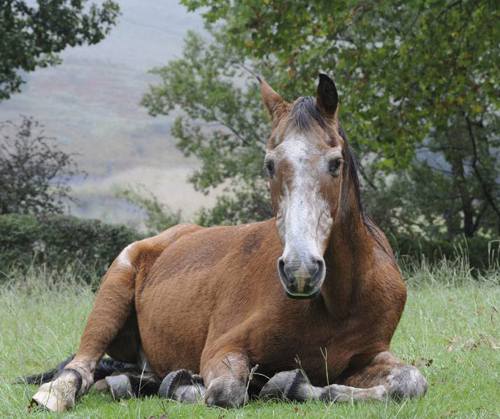
Each horse ages differently, and while these signs might be obvious in some, they might be invisible in others.
Signs can include:
- Reduced immunity
- Dull coat and poor skin quality
- Reduced vision and hearing
- Teeth disorders
- Hollowing or sway back
- Reduced ability to carry the weight of a rider
- Joint problems.
Health conditions
Genetics, management and environment can all affect the ageing process1 and therefore, all horses should be treated according to their individual requirements.
Arthritis
chevron-down
chevron-up
Arthritis is a joint inflammation that can lead to reduced performance, pain and lameness. Horses can be affected at any age, however it is more common in older horses due to years of wear and tear on the joints. A horse’s chance of developing arthritis increases if they have previously suffered with a joint injury or infection, or if they have had a demanding athletic career1,2.
Dental care
chevron-down
chevron-up
Horses’ teeth will naturally wear away approximately 2-3mm every year. To compensate for this loss the teeth continually erupt as they wear. As the horse ages there’s less tooth left to erupt and when the horse reaches its mid to late twenties, there is nothing left and the tooth effectively ‘runs out’.
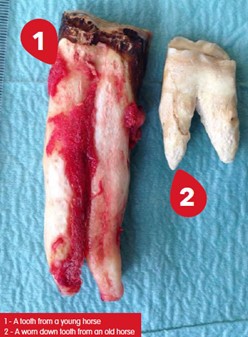
Photo Credit: Chris Pearce, Equine Dental Clinic
The shape, length and condition of the horse’s teeth will also change in their older years, making them more prone to specific dental problems. Some of which will not be clearly visible to the owner.
Changes to the horse’s teeth also make them less effective, so chewing certain foods such as grain, mixes or rough forages and grazing can be much more difficult. This can increase their risk of colic, choke and weight loss. Soaked and softer feeds are preferable as a fibre replacement as it means the teeth don’t have to work very hard for the horse to get the nutrients it needs. Be aware that soaking feed increases the bulk and limits the number of calories the horse can eat at once. Ideally the daily ration should be divided into four or five smaller feeds.
It is strongly advised that older horses have a dental check every 6-12 months by a vet or qualified equine dental technician to ensure they are kept comfortable and pain free.
Cushing’s Disease
chevron-down
chevron-up
Cushing’s Disease, or Pituitary Pars Intermedia Dysfunction (PPID) is a long term, progressive condition caused by an imbalance in the hormones produced by the pituitary gland. The pituitary gland is important in controlling a range of functions including metabolism. Age-related degeneration can cause the pituitary gland to become overactive, leading to an imbalance in the hormones being produced.
Age-related cataracts
chevron-down
chevron-up
Cataracts are when the lens within the horse’s eye begins to develop cloudy patches. Think of the younger horses’ lenses like clear glass, allowing them to see through. As they get older, their lenses may start to become frosted, like bathroom glass, and begin to limit their vision. Over time these patches usually become bigger causing blurry, misty vision, which can eventually lead to blindness.
Signs1,4:
- Continuous stumbling/ tripping
- Knocking into objects
- Problems picking up their feet over small obstacles (e.g. the step into the arena)
- Shying back / jumpiness / spooking
- Cloudiness or white opaqueness of the pupil
- Difficulty walking straight.
Seek veterinary support if you have any concerns for your horse.
Hoof care
chevron-down
chevron-up
As your horse ages, their hooves will start to grow more slowly, however it is still important to have regular farrier visits of between 4-6 weeks (your farrier will be best to advise on an exact time frame for your horse). If they are left to grow too long and become unbalanced, this will put extra strain on the joints and worsen any pre-existing joint conditions, potentially causing great discomfort.
Pick your horse’s feet out daily to reduce the risk of infection such as thrush. Elderly horses can suffer with a reduced immune system, so if this is allowed to develop, they’ll find it much harder to fight off5.
Be mindful that elderly horses may not be able to pick their feet up as high as a younger horse due to joint weaknesses and stiffness. To help keep them as comfortable as possible, support their weight and keep the foot low and close to the midline.
Melanomas
chevron-down
chevron-up
Melanomas are the most common skin tumour to affect elderly horses, especially older grey horses1,6. They will often remain non-cancerous but continue to grow slowly over several years, with problems commonly occurring when multiple melanomas grow in one area causing irritation and possible sores. When grooming your horse take time to look for any signs of melanomas growing, paying particular attention to:
- Under the tail and around the anus
- Around genitalia
- Below the ears and behind the jaw
- Around the mouth.
If you have concerns seek support from your vet who will be best to advise on your horse’s options.
Deworming
chevron-down
chevron-up
A testing-led deworming programme should be in place for your elderly horse. Older horses can suffer with a reduced immune response which can leave them more vulnerable to a high worm burden5. Seek advice from your vet to discuss the frequency of testing and possible treatment that may be required for your horse.
Sensible management practices can help reduce the risk of problems arising and break the worm lifecycle. This can include:
- Pick up droppings at least twice a week, more frequently if possible.
- Rotate paddocks for rest periods. Ideally keep a pasture free from horses for several months to give time for worm eggs and larvae to die. In hot, dry weather eggs and larvae will die faster than in mild damp weather.
- Cross graze your pasture with other grazing species to break worm life-cycles. Sheep/goats/cattle will clean the pasture of larvae and eggs without becoming ill themselves (and vice versa). Don’t forget to speak to your vet about a protocol for monitoring worms in the other species on your pasture.
- Plan your pasture management and keep records.
Nutrition and feeding
The nutritional needs of a healthy aged horse with an ideal fat score, will be similar to a younger adult horse. It is only when their health is compromised that additional factors may need to be considered. If you notice any unexpected weight loss or gain, always seek support from your vet to determine whether there is any underlying cause such as a problem with their teeth.
Reduction or loss of appetite may be a result of long-term pain. Horses with arthritis, especially in the neck and forelimbs, may feel discomfort when pulling hay from a net and can experience increased pain when the head is lowered, making grazing uncomfortable7. Speak to your vet if you have any concerns for your horse.
Be mindful of bullying if your elderly horse is kept in a herd environment, especially if additional forage is being fed. Any supplementary feed may need to be given in a separate corral to ensure they have the chance to eat it all.
As horses age they can become less effective at keeping themselves warm naturally, so if you notice your horse losing excessive weight over the winter and becoming too thin, make sure they have access to shelter, rugs and supplementary feeding through the colder months.
If your elderly horse has a tendency to lose weight, feed high fibre and protein rich feeds — vegetable oils can also be added to increase calories7. Be sure to introduce any new food gradually over a period of 10-14 days to reduce the risk of colic.
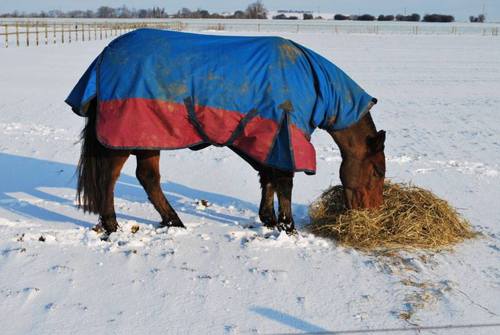
Fat score
Making sure your horse has a healthy fat score (2.5-3 out of 5) is a key factor in managing their general health and wellbeing. An overweight, aged horse is as much of a concern as an underweight, aged horse. If your horse gains too much weight this can increase their risk of laminitis, as well as put more strain on already aged joints and internal organs7. If you notice your horse gaining excess weight consider:
- Soaking hay to reduce calories
- Reassessing their supplementary feeds – a feed balancer may be more appropriate
- Introducing an alternative grazing system
- Use enrichment to slow down the rate of consumption.
Unexpected weight loss is of equal concern and can tie in with a lot of age-related health conditions. Monitoring your horse’s weight regularly through fat scoring will help you to detect illness early and ensures you will be able to react to any changes in condition quickly and seek the necessary support.
Exercise
Carefully consider your horse’s exercise regime to make sure you are encouraging mobility for health without putting unnecessary stress on the heart and lungs, as well as old injuries or areas of particular weakness.
Muscle loss over the back and hind quarters is commonly seen in elderly horses and can lead to weakness in the area. Gentle ridden exercise can prevent this, however elderly horses should only be exercised if sound, healthy and under veterinary guidance.
Due to changes in your horse’s shape regular saddle fitting checks are necessary to prevent pain and discomfort.
A suitable and consistent exercise plan can also help reduce stiffness. Include a long warm up phase which allows your horse to stretch and prepare for exercise and a long cool down to reduce the risk of injury and prevent older joints or muscles seizing up.
Your horse’s ability to cope with their workload should be regularly reviewed and at some stage decisions made to reduce the type and amount of exercise they do. Seek support from your vet and an Accredited Professional Coach.
If your horse is retired where possible increase turn out time and avoid long periods stood in the stable where movement will be restricted. During the winter months where turn out may be limited look at other ways you can increase the time out of their stable e.g. turn out in a safe and secure arena or lunge pen. If possible, it can also be beneficial to do some in hand work including daily walks.
References
chevron-down
chevron-up
- The British Horse Society. Complete Horsemanship Volume 4. Kenilworth Press of Quiller Publishing Ltd. (2019). Pg. 269.
- McIlwraith, C.W. et al. Joint Disease in the Horse. Second Edition. Elsevier Publishing. (2015). Pg. 34-35
- McGowan. “Epidemiology and Clinical Perspectives of Endocrinopathic Laminitis”, BEVA Congress 2009
- Ireland, J. L. et al. (2011). Disease prevalence in geriatric horses in the United Kingdom: Veterinary clinical assessment of 200 cases. Equine Veterinary Journal. 44(1). P. 101-106.
- McFarlane, D. (2016). Immune dysfunction in aged horses. Veterinary Clinics of North America: Equine Practice. 32(2) P 333-341.
- Seltenhammer, M.H. et al. (2010). Equine melanoma in a population of 296 grey Lipizzaner horse. Equine Veterinary Journal. 35(2). P 153-157.
- N. Jarvis, M. R. Paradis. & P. Harris. (2019) Nutrition considerations for the aged horse. Equine Veterinary Journal. 31(2) P 102-110.

